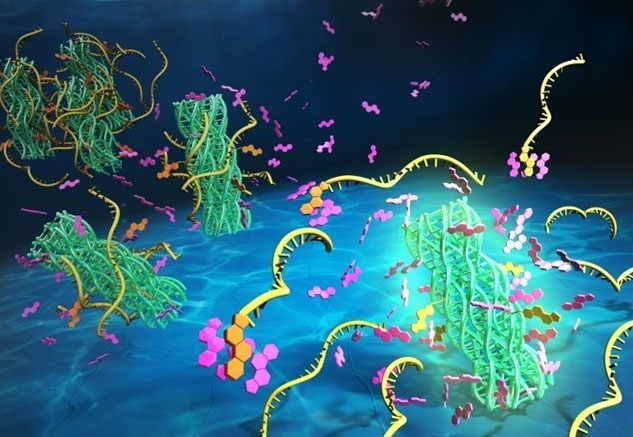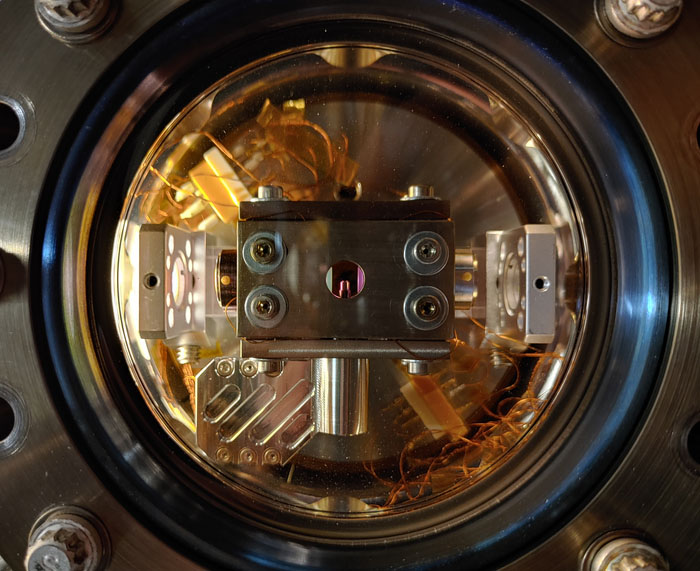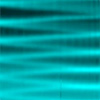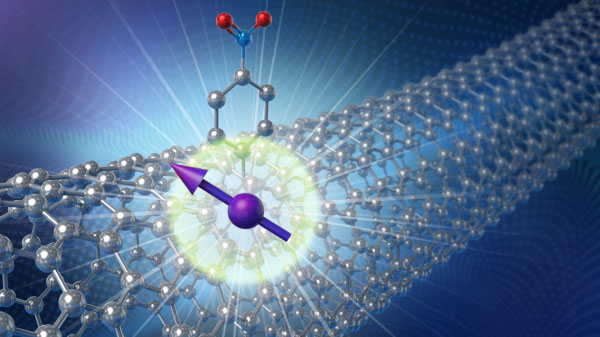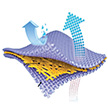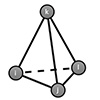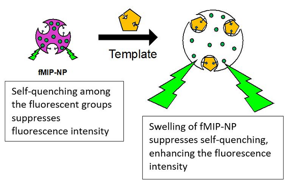Mar 06, 2023 (Nanowerk News) Researchers in Japan have developed a new method for purifying cholesterol-modified DNA nanostructures that could be used to functionalize molecular robot bodies (lipid vesicles). The study was a collaboration between Yusuke Sato of Kyushu Institute of Technology and Shin-ichiro M. Nomura of the Tohoku University,...
Two-dimensional quantum freeze
Mar 06, 2023 (Nanowerk News) Glass nanoparticles trapped by lasers in extreme vacuum are considered a promising platform for exploring the limits of the quantum world. Since the advent of quantum theory, the question at which sizes an object starts being described by the laws of quantum physics rather than...
Graphene quantum dots show promise as novel magnetic field sensors
Mar 06, 2023 (Nanowerk News) Trapped electrons traveling in circular loops at extreme speeds inside graphene quantum dots are highly sensitive to external magnetic fields and could be used as novel magnetic field sensors with unique capabilities, according to a new study. Electrons in graphene (an atomically thin form of...
Carbon nanotube makes ideal home for spinning quantum bits
Mar 06, 2023 (Nanowerk News) Scientists are vigorously competing to transform the counterintuitive discoveries about the quantum realm from a century past into technologies of the future. The building block in these technologies is the quantum bit, or qubit. Several different kinds are under development, including ones that use defects...
MOF catalyst purifies herbicide-tainted water and produces hydrogen
Mar 06, 2023 (Nanowerk News) Researchers in the Oregon State University College of Science have developed a dual-purpose catalyst that purifies herbicide-tainted water while also producing hydrogen. The project, which included researchers from the OSU College of Engineering and HP Inc. is important because water pollution is a major global...
Oxide interfaces put new twist on electron spins
Mar 06, 2023 (Nanowerk News) In magnetic solids, electrons feel each other as what scientists call an effective magnetic field. This field forces the electrons’ magnetic moments (spins) to align. If the arrangement of atoms is not fully symmetric, an additional magnetic force known as Dzyaloshinskii-Moriya Interaction (DMI) can emerge....
Light-induced acceleration of intracellular delivery
Mar 06, 2023 (Nanowerk News) Cell membranes are barriers that maintain cellular homeostasis, and the intracellular delivery of biologically functional molecules, including peptides, proteins, and nucleic acids to manipulate cellular functions. Conventional intracellular uptake processes require high concentrations of biofunctional molecules with low permeability to pass through the cell membrane....
The latest in nanoengineered textiles
Mar 06, 2023 (Nanowerk Spotlight) The outdoor environment has become an indispensable aspect of our daily lives, serving as a venue for a plethora of activities, including recreation, sports, and leisure, as well as work-related endeavors. However, the increasingly frequent extreme weather events caused by climate change have made personal...
What makes a neural network remember?
Mar 06, 2023 (Nanowerk News) Computer models are an important tool for studying how the brain makes and stores memories and other types of complex information. But creating such models is a tricky business. Somehow, a symphony of signals – both biochemical and electrical – and a tangle of connections...
Nanotechnology Now – Press Release: Developing nanoprobes to detect neurotransmitters in the brain: Researchers synthesize fluorescent molecularly imprinted polymer nanoparticles to sense small neurotransmitter molecules and understand how they govern brain activity
Home > Press > Developing nanoprobes to detect neurotransmitters in the brain: Researchers synthesize fluorescent molecularly imprinted polymer nanoparticles to sense small neurotransmitter molecules and understand how they govern brain activity Researchers from the Shibaura Institute of Technology have synthesized fluorescent molecularly imprinted polymeric nanoparticles (fMIP-NPs) that serve as probes...

